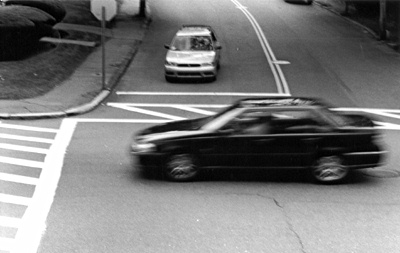All Nonfiction
- Bullying
- Books
- Academic
- Author Interviews
- Celebrity interviews
- College Articles
- College Essays
- Educator of the Year
- Heroes
- Interviews
- Memoir
- Personal Experience
- Sports
- Travel & Culture
All Opinions
- Bullying
- Current Events / Politics
- Discrimination
- Drugs / Alcohol / Smoking
- Entertainment / Celebrities
- Environment
- Love / Relationships
- Movies / Music / TV
- Pop Culture / Trends
- School / College
- Social Issues / Civics
- Spirituality / Religion
- Sports / Hobbies
All Hot Topics
- Bullying
- Community Service
- Environment
- Health
- Letters to the Editor
- Pride & Prejudice
- What Matters
- Back
Summer Guide
- Program Links
- Program Reviews
- Back
College Guide
- College Links
- College Reviews
- College Essays
- College Articles
- Back
The End of Traffic
Every day, you are faced with your worst nightmare, after traffic when you are already late. The horrendous red light stares you down telling you that you have to freeze. And wait. Two minutes pass and you are still waiting. Without even knowing it, humans spend an average of six months in their lifetime waiting on a red light to turn green. Six months is a long time, but imagine spending six months just staring at a red light. A lot of that time is used by looking at the latest trends on Instagram or listening to your favorite songs when it could be used to read or do something productive. Some people don’t follow red light traffic laws and cause accidents. On average, there are about 165,000 accidents per year in the US caused by those running red lights. That is about 60% of traffic-related accidents. In the future, many companies envision roads without traffic lights. When self-driving cars become popular, the hope is that they can drive by speeding up and slowing down to turn corners, without having to stop. This will save gas and help prevent accidents. This demonstrates how pedestrians drive themselves by speeding up and slowing down to avoid bumping into each other.
The whole problem that creates traffic due to unnecessary things is called a phantom intersection. This happens when one car breaks a little and the cars behind follow doing the exact same thing until one car comes to a complete stop. This can happen from anything such as someone changing lanes or even from a piece of garbage that flew across the road. A different example of what could be a phantom intersection is when you accelerate at a green light. The hope for the future of traffic is that self-driving cars will be able to communicate with each other at the speed of light and tell the other cars to accelerate at the same time. If you think about it, when a red light turns green a whole lot more cars would be able to go if they all accelerated at the same time.
A different major cause of traffic is people slowing down to look for parking spots. In the future, self-driving cars are planned to work like Uber or Lift. When you are dropped off, the car will leave to pick up its next ride. The car will be able to alert the cars around it that they will be slowing down so that all of the other cars can move around, causing no stop in traffic.
As humans, we have relatively slow reactions. This is why accidents occur so frequently. Self-driving cars will have fast reaction times leaving minimal accidents. On the rare occasion that an accident does happen such as a car getting struck by lighting, the other cars will know to go around it. If there is an accident, humans tend to stop to look and block up the road. This will not be the case for self-driving cars because they will take the fastest route and not slow down.
Overall, self-driving cars are going to be a major adjustment to current conditions. By 2040, experts say that 95% of the vehicles on the road will be self-driving. In conclusion, self-driving cars will hopefully eliminate your worst traffic nightmares.

Similar Articles
JOIN THE DISCUSSION
This article has 0 comments.
